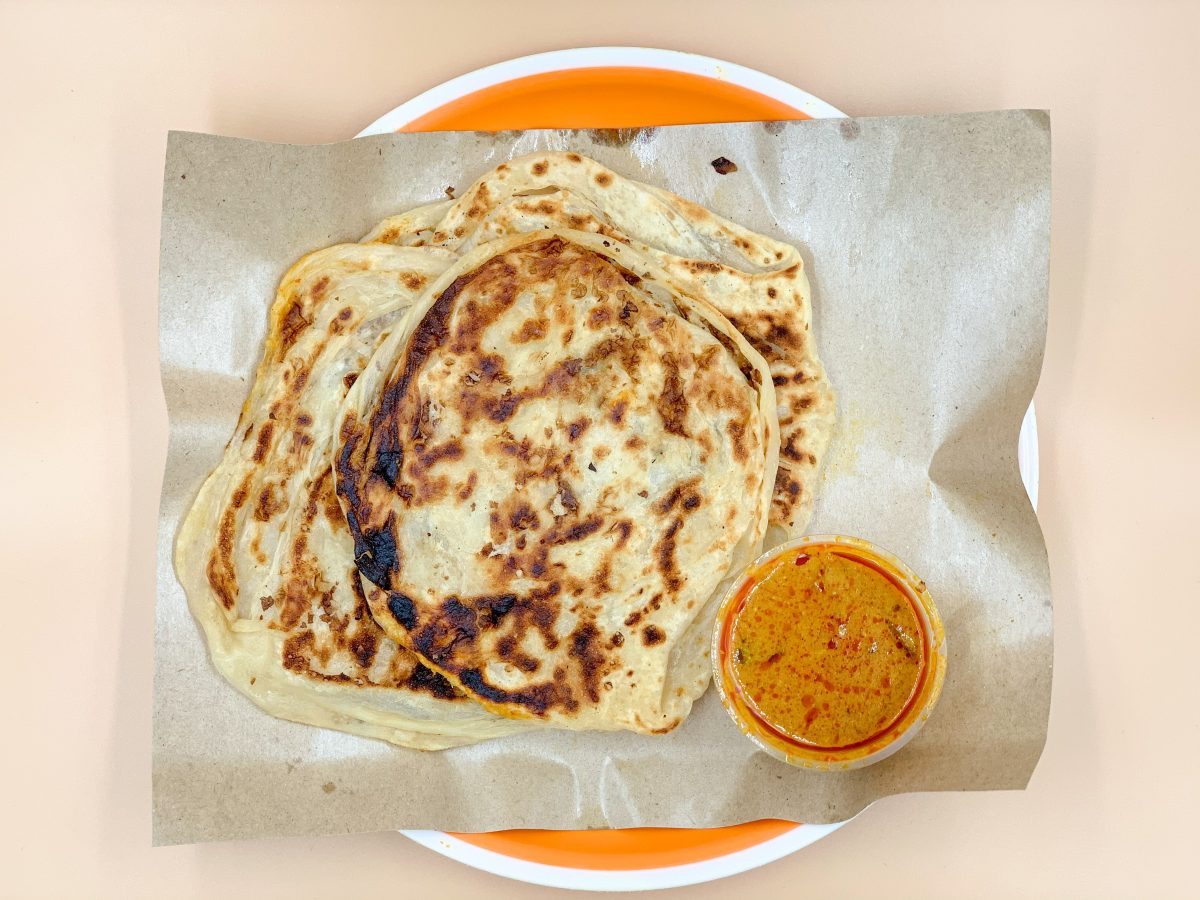ON HAWKER: Prata
ON HAWKER is our ongoing research project on Singapore’s hawker culture. We explore essential dishes from this city’s culinary tradition and investigate their international influences.
“Prata is from India!”
“No, prata is from Malaysia.”
“No, prata is Singaporean!”
If you trace prata back far enough, prata is actually Uzbekistani.
Making prata is a day-long process. Flour, ghee, margarine, and salt are mixed with water and then kneaded to yield dough that is soft and pliable. It is then left to rest overnight. Once you submit your order for prata, the prata man flattens the dough until it is thin and stretched. The dough is then folded and placed on a heavily oiled griddle. It is served once both sides of the prata are blistered with dark brown spots.1
While the first recorded fermentation and creation of unleavened bread— bread that is prepared without yeast, like prata— can be traced to Egypt, there is much more evidence to suggest the importance of bread to the Turko-Mongol Timurid Empire.2 It ruled over much of present-day Central Asia from the 14th to the 16th Century. Records describe the tale of the fearsome Emperor Tamerlane, who brought six bakers with him on his brutal conquests of expansion, and killed all of them when the bread they made did not equal the quality of bread made in Samarkhand, the capital of the empire.3 It is in Samarkhand that we find the origins of the prata, the famed Uzbek bread known as non.
Enter Emperor Babur, who was born in Fergana (modern day Uzbekistan) in the late 15th century. After ascending the throne in 1495, he invaded and conquered Northern India in 1524. Thus began the Mughal Empire.4 Babur was unimpressed with everything he found in India. His autobiography, Baburnama, states that he found “Hindustan as a place of little charm” that had “no good flesh, no grapes or muskmelons, no good fruits. no good bread or food in their bazaars”.5,6 We have reason to believe that higher quality bread was then introduced to India, explaining the origin of naan, and eventually, prata in Singapore.
A more plausible theory revolves around Babur’s son and succeeding emperor, Humayun. Following a devastating defeat in his North Indian territories to Sher Shah in 1540, Humayun took refuge in Persia, rebuilt his army, and returned to India to claim his territory back in 1555.7 Records show that Humayun brought with him several Persian traditions, including the practice of cooking unleavened bread in big ovens known as tandoors.8 What we now enjoy as Indian naan— one of the approximately 30 different types of flatbread in India— has its roots in a Central Asian empire.
Fast forward three centuries to the 1850s, when the British instituted a policy of forced migration from India to Southeast Asia. Known as the kangani system, a network of headmen recruited their friends and family members from rural villages in South India to migrate to British colonies in the Malaysian archipelago.9 Cheap labour was one of the first raw materials to be exported to British colonies.10
This period of migration, or a similar instance of Indians being shipped as convict labour between 1825 and 1873, could have brought to Singapore the Central Asian tradition of frying or cooking bread, thereby allowing prata to become a culinary mainstay in the region.11
There are countless analogues to prata. Treating is as a manifestation of unleavened bread puts it square among the flatbread tradition. The list includes but is not limited to non in Uzbekistan; piadina bread in Italy, pita bread in the Middle East, chapati in India, and lavash in Armenia. The prata truly belongs to a grander tradition.
Annotated Bibliography
National Library Board.
The National Library Board (NLB) is a statutory board under the Ministry of Communications and Information (MCI) in Singapore. Along with being held to the standard of government scrutiny, research memos published by the library are also rigorously substantiated with various primary (books, interviews) and secondary (newspapers) sources that can be found in the library.
Britannica.
Britannica is an encyclopedia that has been at the forefront of knowledge consumption in its 250 year history. It is built on the knowledge and research of experts and researchers.
Guilmoto, 1993. Economic and Political Weekly. “The Tamil Migration Cycle, 1830-1950”.
Christopher Z Guilmoto is a senior fellow in Demography at the French Institut de REcherche pour le Développement (IRD). He spent three years in South India completing his Ph. D. on South India’s population history.
Gupta, 2019. The Indian Express. “From Babur to Jahangir, how the Mughal empire enriched Indian cuisine”.
The Indian Express is a reputed newspaper that is known for being pro-Congress and pro-corporate. This bias does not seem to seep into this article, which forms an important body of information for this abstract.
Written by Arjun Jayaraman
Notes
1 National Library Board. Source: https://eresources.nlb.gov.sg/infopedia/articles/SIP_869_2005-01-11.html.
2 Source: https://www.bakeinfo.co.nz/Facts/Bread-making/Bread-production-in-New-Zealand
3 Eden, 2016. The Financial Times. “Quick bites: breaking bread in Uzbekistan”. Source: https://www.ft.com/content/4fca456c-63f7-11e6-8310-ecf0bddad227
4 Britannica. Source: https://www.britannica.com/biography/Babur.
5 Gupta, 2019. The Indian Express. “From Babur to Jahangir, how the Mughal empire enriched Indian cuisine”.
6 Ibid.
7Britannica. Source: https://www.britannica.com/biography/Humayun-Mughal-emperor.
8 Pillalamarri, 2016. The Diplomat. “An Emperor in Exile: Chronicling Humayun’s Days and Conquests”.
9 Guilmoto, 1993. Economic and Political Weekly. “The Tamil Migration Cycle, 1830-1950”. Source: www.jstor.org/stable/4399307.
10 Ibid.
11 National Library Board. “Indian convicts’ contributions to early Singapore (1825 – 1873)”. Source: https://eresources.nlb.gov.sg/infopedia/articles/SIP_39_2005-02-02.html.

